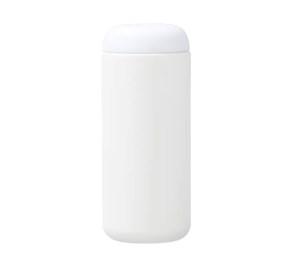The stainless steel thermos bottle, a ubiquitous item in both professional and personal settings, is renowned for its durability and ability to maintain the temperature of its contents. However, the question of whether a stainless steel thermos bottle is prone to rusting and how to prevent it is a common concern among users. This article delves into the rust resistance of stainless steel thermos bottles and provides practical advice on how to maintain them to prevent rust.
Stainless steel, as the name suggests, is designed to resist rust and corrosion. It is an alloy primarily composed of iron, with a minimum of 10.5% chromium. The chromium forms a passive layer of chromium oxide on the surface, which prevents further corrosion by blocking oxygen from reaching the metal. This makes stainless steel an excellent material for thermos bottles, as it is not only resistant to rust but also to staining and odor absorption.
Despite its inherent rust resistance, a stainless steel thermos bottle can still be susceptible to rust if not properly cared for. Rust typically forms when the protective chromium oxide layer is compromised, allowing oxygen to react with the iron. This can happen due to several factors, including exposure to harsh chemicals, abrasive cleaning materials, or even certain acidic foods and beverages.
To prevent rust in a stainless steel thermos bottle, it is essential to follow a few simple care guidelines. First, avoid using harsh detergents or abrasive cleaning tools that can scratch the surface and damage the protective layer. Instead, opt for mild dish soap and a soft sponge or cloth for cleaning. Second, promptly address any spills or stains by wiping them away as soon as possible to prevent them from causing damage over time.
Another factor to consider is the type of stainless steel used in the thermos bottle. There are various grades of stainless steel, with the most common being 304 and 316. The latter, 316 stainless steel, is more resistant to corrosion due to the addition of molybdenum, making it a better choice for environments where the thermos bottle may be exposed to saltwater or other corrosive substances.
Regular inspection of the stainless steel thermos bottle can also help in identifying any early signs of rust. If rust spots are detected, they can often be removed using a mixture of baking soda and water, which acts as a gentle abrasive. Applying the paste to the affected area and gently rubbing it with a soft cloth can help to lift the rust without damaging the surface.
In addition to proper cleaning and maintenance, storing the stainless steel thermos bottle in a dry environment is crucial. Moisture can accelerate the rusting process, so it is best to ensure that the bottle is thoroughly dried before being stored, especially if it has been used to hold a beverage with a high sugar content or acidity.
In conclusion, while stainless steel thermos bottles are designed to be rust-resistant, they do require proper care and maintenance to ensure their longevity. By following the guidelines outlined in this article, users can enjoy the benefits of a stainless steel thermos bottle without the worry of rust. With the right approach, a stainless steel thermos bottle can serve as a reliable and durable companion for years to come.
